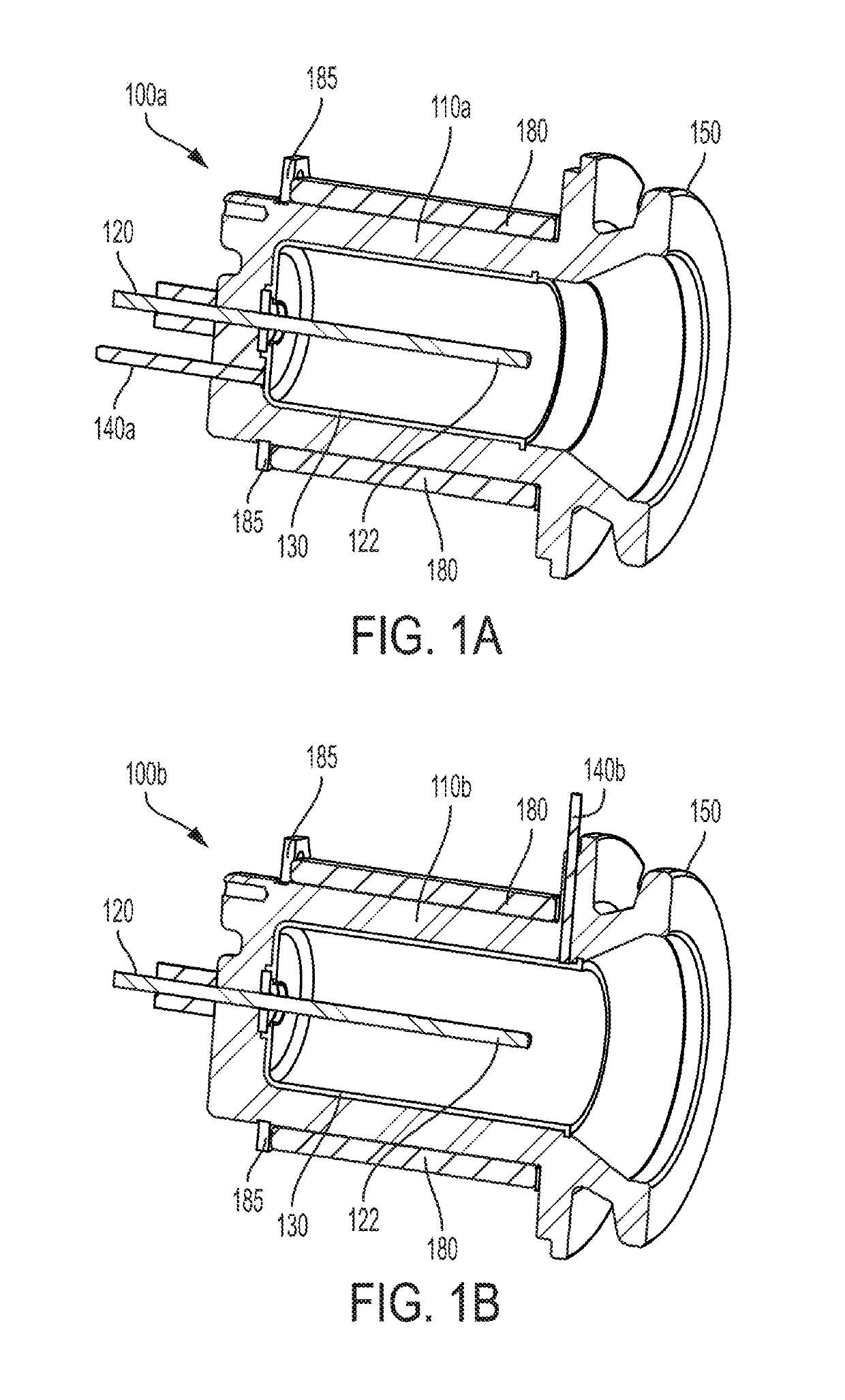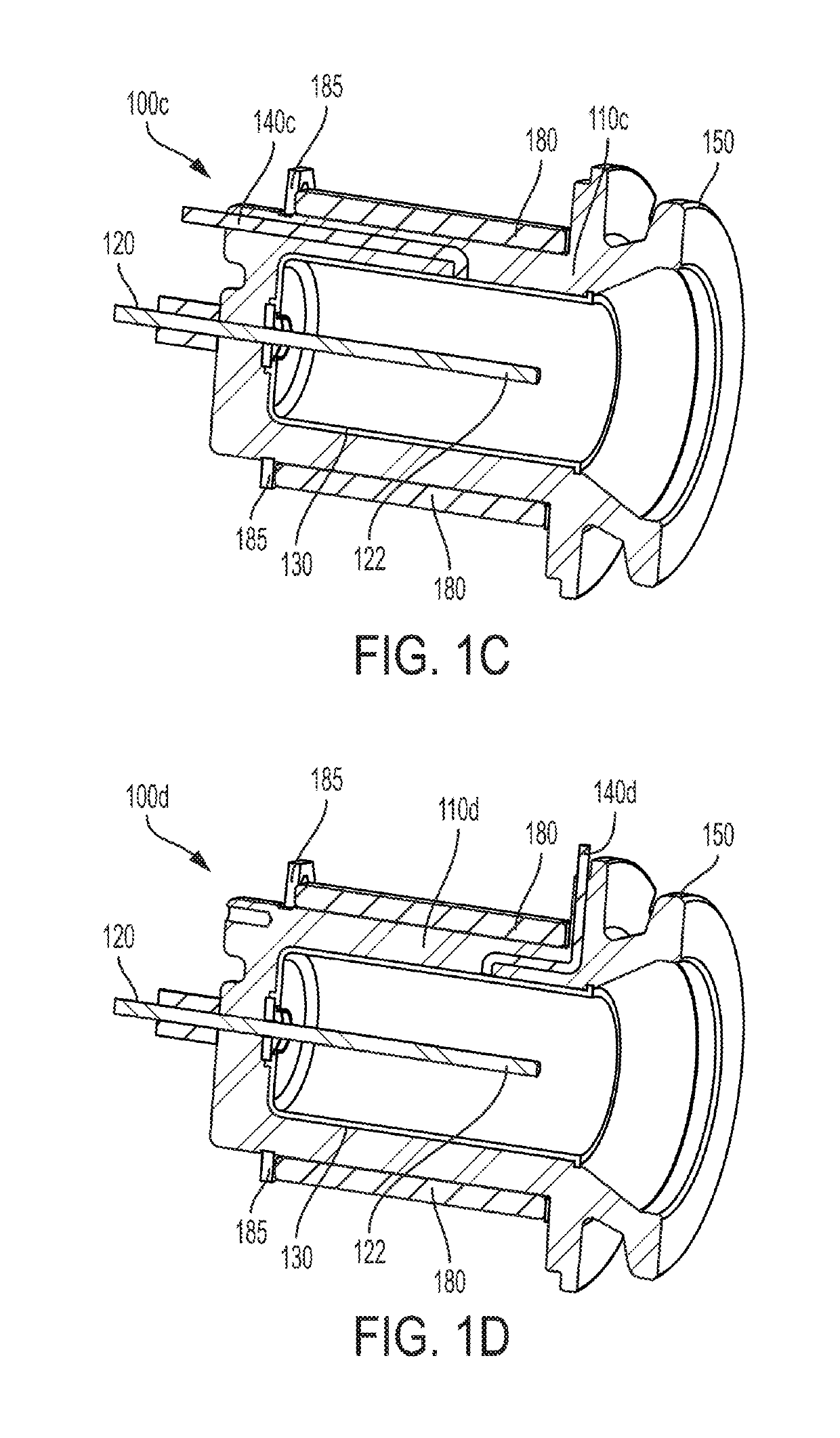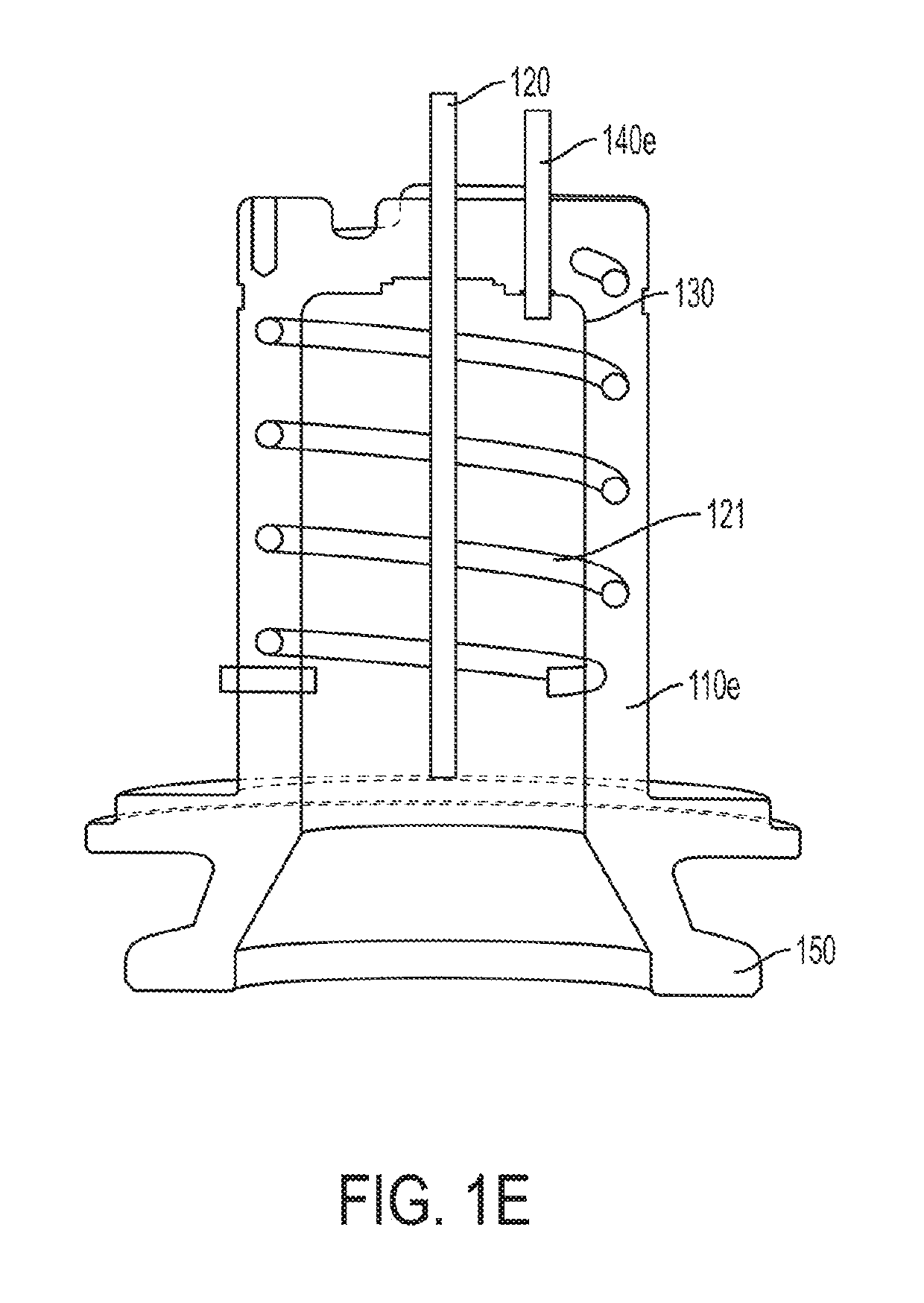Polymer composite vacuum components
a vacuum component and composite technology, applied in the field of polymer composite vacuum components, can solve the problems of difficult manufacturing of unique geometries, difficult to manufacture housings with nonlinear electrical feedthrough, and high cost of stainless steel, and achieve the effects of low cost, low cost and cost effectiveness
- Summary
- Abstract
- Description
- Claims
- Application Information
AI Technical Summary
Benefits of technology
Problems solved by technology
Method used
Image
Examples
Embodiment Construction
[0048]A description of example embodiments of the invention follows.
[0049]The cold cathode ionization vacuum gauge described herein relies on the inverted magnetron principle. The gauge is of cylindrical symmetry. A large voltage potential difference (i.e., radial electric field) between the anode pin, located on the axis of the gauge, and the cylindrical cathode, inside the vacuum envelope, provides energy to the electrons for the ionization events to occur. A crossed axial magnetic field provides the longer electron trajectory path length required to sustain a discharge inside the envelope. The discharge current is the measured quantity and is proportional to the total pressure in the system.
[0050]The discharge is established through an avalanche ionization process that generally starts with a single electron being released into the ionization volume of the gauge. The process is responsible for releasing an electron can include a field emission event or a cosmic ray ionization pro...
PUM
| Property | Measurement | Unit |
|---|---|---|
| pressures | aaaaa | aaaaa |
| thickness | aaaaa | aaaaa |
| pressures | aaaaa | aaaaa |
Abstract
Description
Claims
Application Information
 Login to View More
Login to View More - R&D
- Intellectual Property
- Life Sciences
- Materials
- Tech Scout
- Unparalleled Data Quality
- Higher Quality Content
- 60% Fewer Hallucinations
Browse by: Latest US Patents, China's latest patents, Technical Efficacy Thesaurus, Application Domain, Technology Topic, Popular Technical Reports.
© 2025 PatSnap. All rights reserved.Legal|Privacy policy|Modern Slavery Act Transparency Statement|Sitemap|About US| Contact US: help@patsnap.com



